
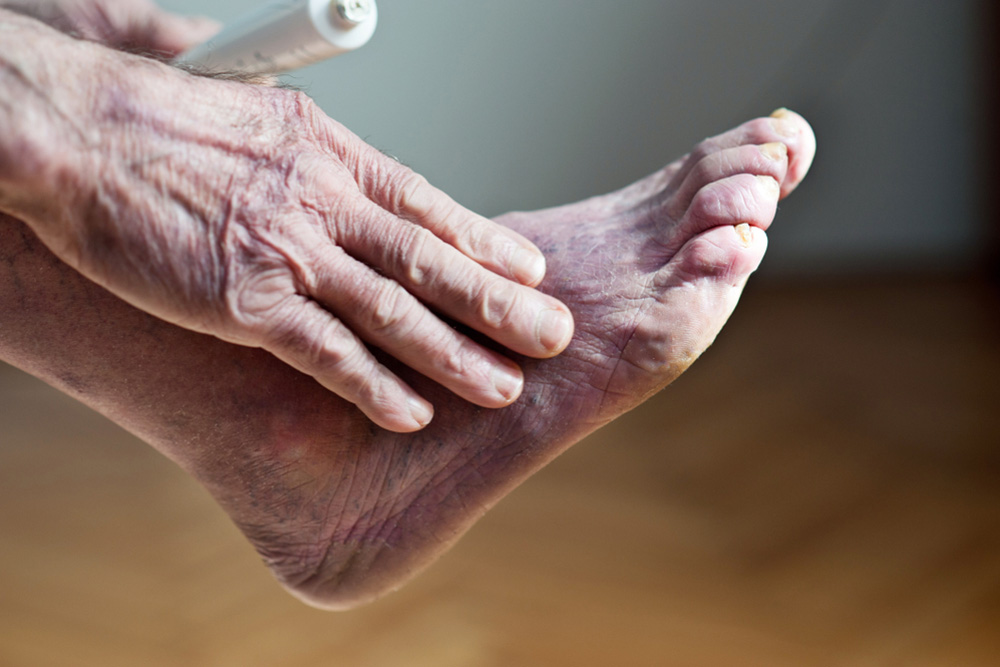 Poor circulation in the feet is common among diabetic patients. Acrocyanosis, which is a condition that can affect the extremities, and arteriosclerosis which can be triggered by high blood pressure are other reasons why this condition can develop. Poor circulation in the feet is the result of closed or narrow blood vessels, and patients who have this may be at risk for other health issues. Some of the symptoms that are associated with this condition include hair loss on the feet and legs, and dry or cracked skin. Additionally, people who have poor circulation may have weak toenails, and their feet may feel cold and have a bluish tint. The medical condition known as Raynaud’s disease syndrome may cause the blood vessels in the feet to become narrow, and this can limit the amount of blood that circulates. Additionally, peripheral artery disease (PAD) may contribute to poor circulation. This can cause the inability to feel existing cuts and scrapes that may have developed on the feet as a result of excessive plaque build up in the arteries. If you have poor circulation in your feet for any reason, please contact a podiatrist who can properly diagnose and treat this ailment.
Poor circulation in the feet is common among diabetic patients. Acrocyanosis, which is a condition that can affect the extremities, and arteriosclerosis which can be triggered by high blood pressure are other reasons why this condition can develop. Poor circulation in the feet is the result of closed or narrow blood vessels, and patients who have this may be at risk for other health issues. Some of the symptoms that are associated with this condition include hair loss on the feet and legs, and dry or cracked skin. Additionally, people who have poor circulation may have weak toenails, and their feet may feel cold and have a bluish tint. The medical condition known as Raynaud’s disease syndrome may cause the blood vessels in the feet to become narrow, and this can limit the amount of blood that circulates. Additionally, peripheral artery disease (PAD) may contribute to poor circulation. This can cause the inability to feel existing cuts and scrapes that may have developed on the feet as a result of excessive plaque build up in the arteries. If you have poor circulation in your feet for any reason, please contact a podiatrist who can properly diagnose and treat this ailment.
Poor circulation is a serious condition and needs immediate medical attention. If you have any concerns with poor circulation in your feet contact Dr. Robert Hope of Riverside Podiatry. Our doctor will treat all of your podiatric needs.
Poor Circulation in the Feet
Poor blood circulation in the feet and legs is can be caused by peripheral artery disease (PAD), which is the result of a buildup of plaque in the arteries.
Plaque buildup or atherosclerosis results from excess calcium and cholesterol in the bloodstream. This can restrict the amount of blood which can flow through the arteries. Poor blood circulation in the feet and legs are sometimes caused by inflammation in the blood vessels, known as vasculitis.
Causes
Lack of oxygen and oxygen from poor blood circulation restricts muscle growth and development. It can also cause:
Those who have diabetes or smoke are at greatest risk for poor circulation, as are those who are over 50. If you have poor circulation in the feet and legs it may be caused by PAD and is important to make changes to your lifestyle in order to reduce risk of getting a heart attack or stroke. Exercise and maintaining a healthy lifestyle will dramatically improve conditions.
As always, see a podiatrist as he or she will assist in finding a regimen that suits you. A podiatrist can also prescribe you any needed medication.
If you have any questions please feel free to contact our offices located in Tuscaloosa, and Fayette, AL and Fayette, AL. We offer the newest diagnostic and treatment technologies for all your podiatric needs.
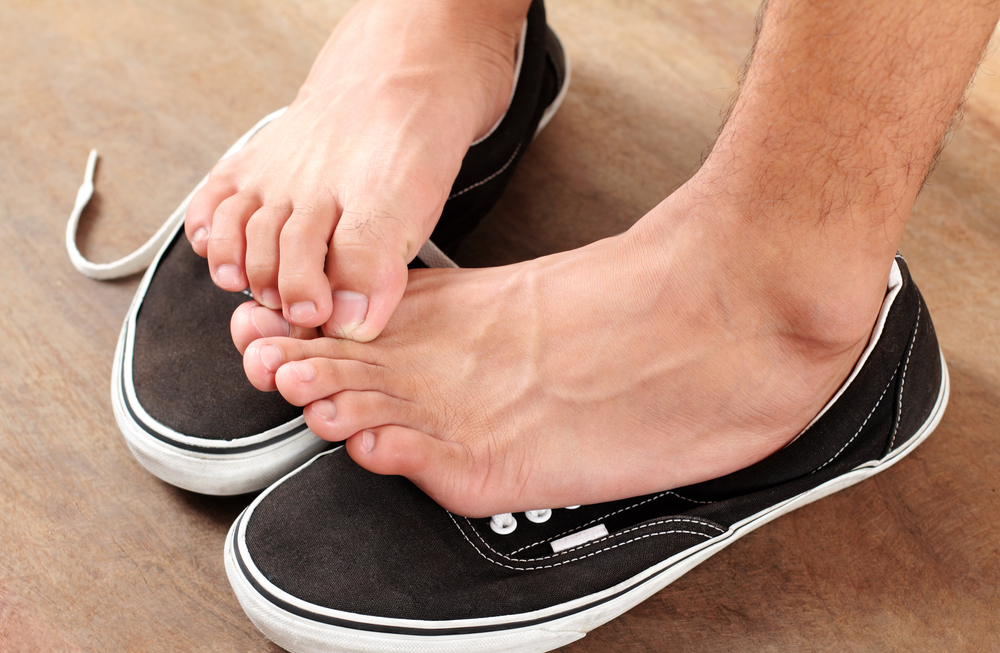 Athlete’s foot, also known as tinea pedis, is the most common fungal infection that affects the feet. It is common in older children, and it might occur in one or both feet. This fungus grows best in warm, moist areas of the skin and between the toes. Someone with this affliction will experience red, moist, scaly, and cracked skin that can be itchy and peeling between the toes. Sometimes they will find small blisters on the bottoms and sides of the feet. This might also be accompanied by an unpleasant odor and can come back repeatedly. Home treatment of athlete’s foot includes washing and drying the child’s feet daily, moisturizing them, using antifungal powders and lotions that can be purchased over-the-counter, wearing clean socks daily, wearing shoes that breathe, not sharing shoes or socks with others, rotating shoes between wearing them, and making sure to wear footwear in public spaces like community showers, gyms, or swimming pools. If the condition is not healing, an infection develops, the feet swell, there is pus or pain, consult with a podiatrist for a more effective treatment for your child’s athlete’s foot.
Athlete’s foot, also known as tinea pedis, is the most common fungal infection that affects the feet. It is common in older children, and it might occur in one or both feet. This fungus grows best in warm, moist areas of the skin and between the toes. Someone with this affliction will experience red, moist, scaly, and cracked skin that can be itchy and peeling between the toes. Sometimes they will find small blisters on the bottoms and sides of the feet. This might also be accompanied by an unpleasant odor and can come back repeatedly. Home treatment of athlete’s foot includes washing and drying the child’s feet daily, moisturizing them, using antifungal powders and lotions that can be purchased over-the-counter, wearing clean socks daily, wearing shoes that breathe, not sharing shoes or socks with others, rotating shoes between wearing them, and making sure to wear footwear in public spaces like community showers, gyms, or swimming pools. If the condition is not healing, an infection develops, the feet swell, there is pus or pain, consult with a podiatrist for a more effective treatment for your child’s athlete’s foot.
Athlete’s foot is an inconvenient condition that can be easily reduced with the proper treatment. If you have any concerns about the overall health of your feet, contact Dr. Robert Hope of Riverside Podiatry. Our doctor will assess your condition and provide you with quality treatment.
Athlete’s Foot: The Sole Story
Athlete's foot, also known as tinea pedis, can be an extremely contagious foot infection. It is commonly contracted in public changing areas and bathrooms, dormitory style living quarters, around locker rooms and public swimming pools, or anywhere your feet often come into contact with other people.
Solutions to Combat Athlete’s Foot
Athlete’s foot can cause many irritating symptoms such as dry and flaking skin, itching, and redness. Some more severe symptoms can include bleeding and cracked skin, intense itching and burning, and even pain when walking. In the worst cases, Athlete’s foot can cause blistering as well. Speak to your podiatrist for a better understanding of the different causes of Athlete’s foot, as well as help in determining which treatment options are best for you.
If you have any questions please feel free to contact our offices located in Tuscaloosa, and Fayette, AL and Fayette, AL. We offer the newest diagnostic and treatment technologies for all your podiatric needs.
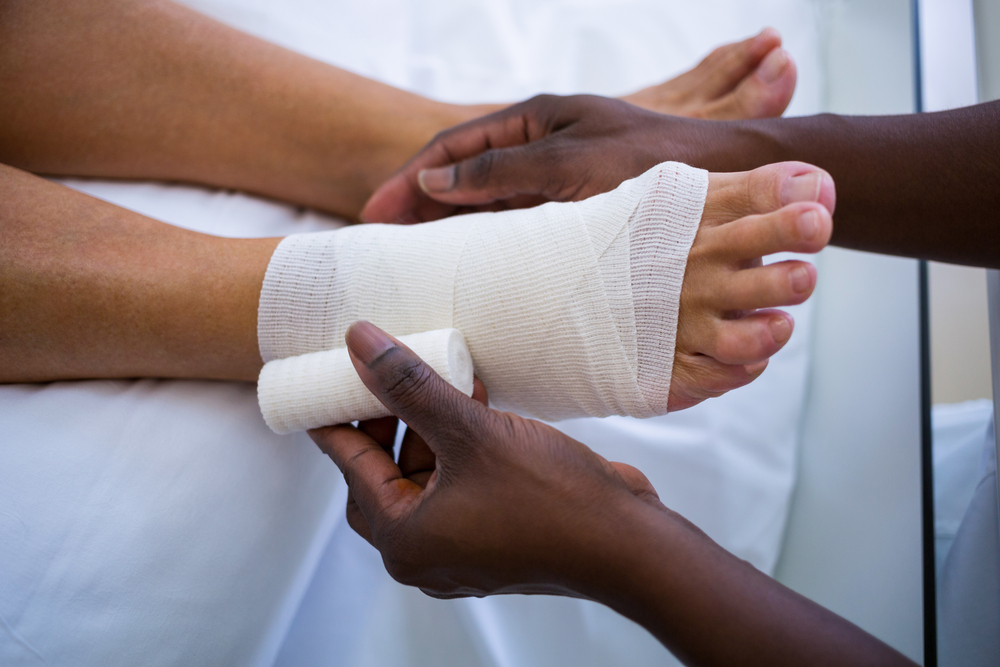 Diabetic patients commonly suffer from nerve damage known as diabetic neuropathy and circulatory problems in their feet. Nerve damage can cause tingling, numbness, sensitivity, and prevent the diabetic from feeling pain or detecting when they have a cut, crack, or another small abrasion on their feet. Any disturbance in the skin such as this would normally be able to heal, were it not for the inadequate flow of blood in the diabetic patient. So even the smallest undetected skin injury can worsen quickly and develop into a wound because it is not getting the supply of oxygen and nutrients it needs to heal. That is why it is vitally important for diabetics to inspect their feet daily and to see a podiatrist right away if anything unusual is spotted. Regular examinations with a podiatrist would be advantageous to the diabetic to prevent wounds from developing as well as be proactive about their foot health.
Diabetic patients commonly suffer from nerve damage known as diabetic neuropathy and circulatory problems in their feet. Nerve damage can cause tingling, numbness, sensitivity, and prevent the diabetic from feeling pain or detecting when they have a cut, crack, or another small abrasion on their feet. Any disturbance in the skin such as this would normally be able to heal, were it not for the inadequate flow of blood in the diabetic patient. So even the smallest undetected skin injury can worsen quickly and develop into a wound because it is not getting the supply of oxygen and nutrients it needs to heal. That is why it is vitally important for diabetics to inspect their feet daily and to see a podiatrist right away if anything unusual is spotted. Regular examinations with a podiatrist would be advantageous to the diabetic to prevent wounds from developing as well as be proactive about their foot health.
Wound care is an important part in dealing with diabetes. If you have diabetes and a foot wound or would like more information about wound care for diabetics, consult with Dr. Robert Hope of Riverside Podiatry. Our doctor will assess your condition and provide you with quality treatment.
What Is Wound Care?
Wound care is the practice of taking proper care of a wound. This can range from the smallest to the largest of wounds. While everyone can benefit from proper wound care, it is much more important for diabetics. Diabetics often suffer from poor blood circulation which causes wounds to heal much slower than they would in a non-diabetic.
What Is the Importance of Wound Care?
While it may not seem apparent with small ulcers on the foot, for diabetics, any size ulcer can become infected. Diabetics often also suffer from neuropathy, or nerve loss. This means they might not even feel when they have an ulcer on their foot. If the wound becomes severely infected, amputation may be necessary. Therefore, it is of the upmost importance to properly care for any and all foot wounds.
How to Care for Wounds
The best way to care for foot wounds is to prevent them. For diabetics, this means daily inspections of the feet for any signs of abnormalities or ulcers. It is also recommended to see a podiatrist several times a year for a foot inspection. If you do have an ulcer, run the wound under water to clear dirt from the wound; then apply antibiotic ointment to the wound and cover with a bandage. Bandages should be changed daily and keeping pressure off the wound is smart. It is advised to see a podiatrist, who can keep an eye on it.
If you have any questions please feel free to contact our offices located in Tuscaloosa, and Fayette, AL and Fayette, AL. We offer the newest diagnostic and treatment technologies for all your podiatric needs.
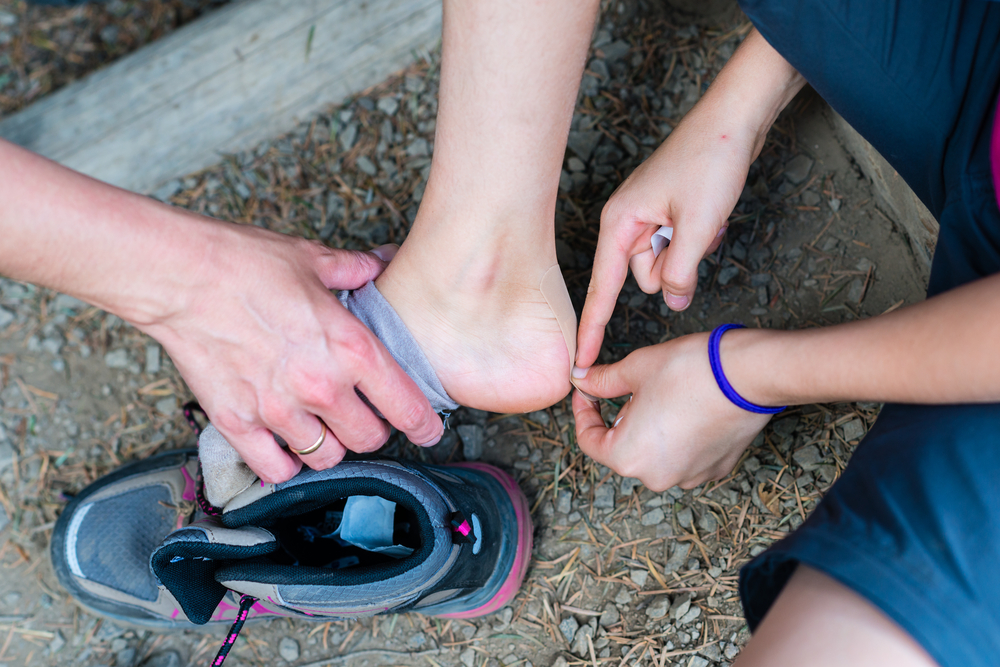 Blisters can be an unsightly and potentially uncomfortable affliction on the foot. Essentially, blisters are areas on the feet that have excess liquid in between layers of skin. There are many different causes of blisters that you might notice on your feet. Commonly, blisters can form on areas of the feet, particularly the toes, when an individual wears a new, ill-fitting pair of shoes. The friction produced by a tight pair of shoes can consequently create a blister. Another common cause of blisters on the feet is overexposure to the sun. When an individual gets a sunburn on their feet and lower legs, blisters that are small and white can appear causing pain and an itching sensation. Blisters may also be the result of excessive moisture around the feet. Specifically, when the feet sweat too much, the excessive sweat can ultimately clog the pores of the feet creating blisters. Knowing the specific cause of the blisters on your feet can help determine the correct treatment. If you have blisters on your feet, contact a podiatrist who can help you address the problem.
Blisters can be an unsightly and potentially uncomfortable affliction on the foot. Essentially, blisters are areas on the feet that have excess liquid in between layers of skin. There are many different causes of blisters that you might notice on your feet. Commonly, blisters can form on areas of the feet, particularly the toes, when an individual wears a new, ill-fitting pair of shoes. The friction produced by a tight pair of shoes can consequently create a blister. Another common cause of blisters on the feet is overexposure to the sun. When an individual gets a sunburn on their feet and lower legs, blisters that are small and white can appear causing pain and an itching sensation. Blisters may also be the result of excessive moisture around the feet. Specifically, when the feet sweat too much, the excessive sweat can ultimately clog the pores of the feet creating blisters. Knowing the specific cause of the blisters on your feet can help determine the correct treatment. If you have blisters on your feet, contact a podiatrist who can help you address the problem.
Blisters are prone to making everyday activities extremely uncomfortable. If your feet are hurting, contact Dr. Robert Hope of Riverside Podiatry. Our doctor can provide the care you need to keep you pain-free and on your feet.
Foot Blisters
Foot blisters develop as a result of constantly wearing tight or ill-fitting footwear. This happens due to the constant rubbing from the shoe, which can often lead to pain.
What Are Foot Blisters?
A foot blister is a small fluid-filled pocket that forms on the upper-most layer of the skin. Blisters are filled with clear fluid and can lead to blood drainage or pus if the area becomes infected.
How Do Blisters Form?
Blisters on the feet are often the result of constant friction of skin and material, usually by shoe rubbing. Walking in sandals, boots, or shoes that don’t fit properly for long periods of time can result in a blister. Having consistent foot moisture and humidity can easily lead to blister formation.
Prevention & Treatment
It is important to properly care for the affected area in order to prevent infection and ease the pain. Do not lance the blister and use a Band-Aid to provide pain relief. Also, be sure to keep your feet dry and wear proper fitting shoes. If you see blood or pus in a blister, seek assistance from a podiatrist.
If you have any questions please feel free to contact our offices located in Tuscaloosa, and Fayette, AL and Fayette, AL. We offer the newest diagnostic and treatment technologies for all your podiatric needs.
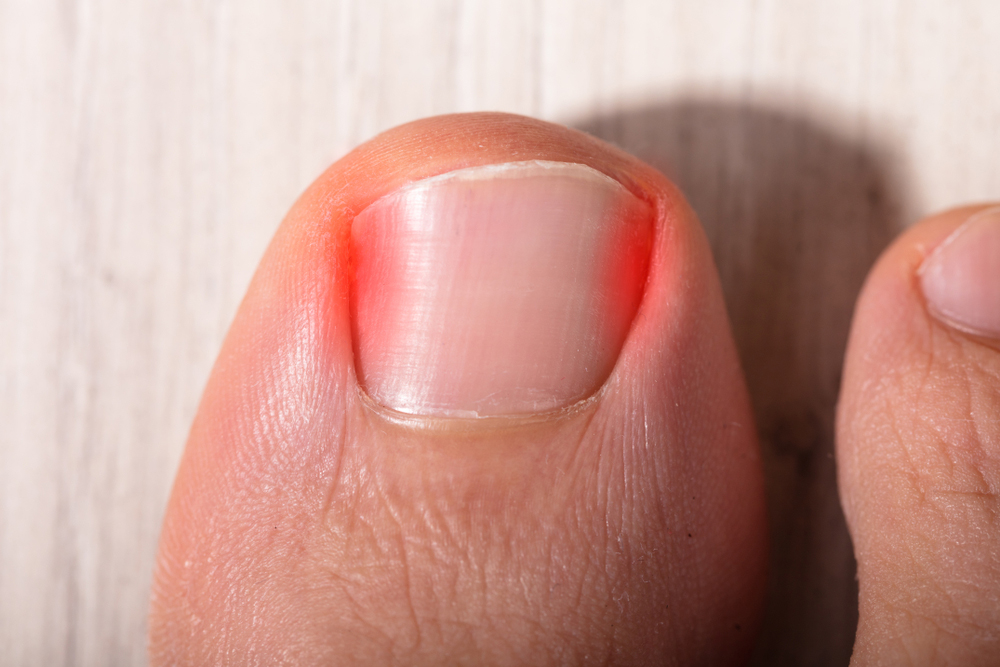 When the outer edge of the toenail pushes into the skin, it is referred to as an ingrown toenail. Ingrown toenails are generally painful, red, and swollen, and it can be difficult to walk. In severe cases, pus may ooze from the area and will need prompt medical attention. An ingrown toenail can happen as a result of wearing shoes and socks that are too small or from trimming the toenails incorrectly. When the toenails are trimmed in a straight line the likelihood of getting an ingrown toenail may be decreased. Diabetic patients may benefit from maintaining proper foot health and this can help to prevent ingrown toenails from developing. Mild relief may be found when the foot is soaked in warm water followed by gently pulling the skin away from the toe using a piece of cotton. This is generally a temporary fix and it is advised to contact a podiatrist who can perform surgery for permanent relief.
When the outer edge of the toenail pushes into the skin, it is referred to as an ingrown toenail. Ingrown toenails are generally painful, red, and swollen, and it can be difficult to walk. In severe cases, pus may ooze from the area and will need prompt medical attention. An ingrown toenail can happen as a result of wearing shoes and socks that are too small or from trimming the toenails incorrectly. When the toenails are trimmed in a straight line the likelihood of getting an ingrown toenail may be decreased. Diabetic patients may benefit from maintaining proper foot health and this can help to prevent ingrown toenails from developing. Mild relief may be found when the foot is soaked in warm water followed by gently pulling the skin away from the toe using a piece of cotton. This is generally a temporary fix and it is advised to contact a podiatrist who can perform surgery for permanent relief.
Ingrown toenails may initially present themselves as a minor discomfort, but they may progress into an infection in the skin without proper treatment. For more information about ingrown toenails, contact Dr. Robert Hope of Riverside Podiatry. Our doctor can provide the care you need to keep you pain-free and on your feet.
Ingrown Toenails
Ingrown toenails are caused when the corner or side of a toenail grows into the soft flesh surrounding it. They often result in redness, swelling, pain, and in some cases, infection. This condition typically affects the big toe and may recur if it is not treated properly.
Causes
You are more likely to develop an ingrown toenail if you are obese, have diabetes, arthritis, or have any fungal infection in your nails. Additionally, people who have foot or toe deformities are at a higher risk of developing an ingrown toenail.
Symptoms
Some symptoms of ingrown toenails are redness, swelling, and pain. In rare cases, there may be a yellowish drainage coming from the nail.
Treatment
Ignoring an ingrown toenail can have serious complications. Infections of the nail border can progress to a deeper soft-tissue infection, which can then turn into a bone infection. You should always speak with your podiatrist if you suspect you have an ingrown toenail, especially if you have diabetes or poor circulation.
If you have any questions please feel free to contact our offices located in Tuscaloosa, and Fayette, AL and Fayette, AL. We offer the newest diagnostic and treatment technologies for all your podiatric needs.